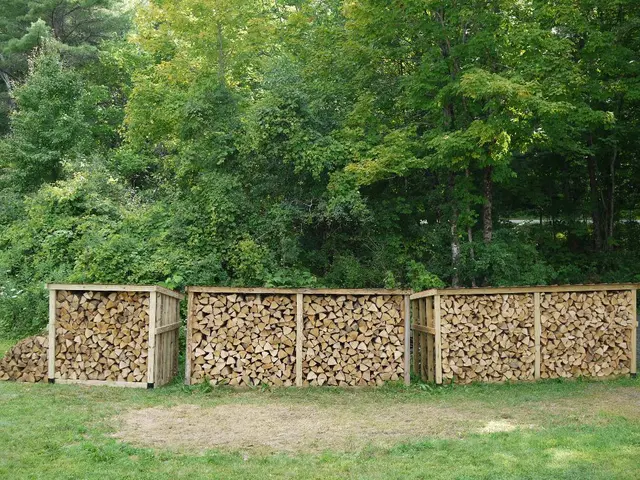Activating an Air Conditioner Post-Winter: A Steps-Guide
Preparing Your Air Conditioning System for Spring: Essential Steps for Efficient Operation
As the spring season approaches, it's crucial to ensure your air conditioning (AC) system is ready for use after its winter hibernation. Avoid unexpected HVAC service needs by following these key steps to ready your AC unit for smooth, safe, and energy-efficient operation from the onset.
- Remove AC Covers and Inspect Unit
- If you have covered the AC unit, use a breathable, waterproof cover specifically designed for the purpose—one that doesn't trap moisture. Avoid tarps and plastic sheets, which can facilitate rust or mold formation. For uncovered units, simply clear away any debris or fallen leaves around the area. Check for condensation damage beneath the unit if it has been covered, especially if the covering was not breathable.
- Protect Fan with Simple Cover
- Consider using a plywood top cover to safeguard the fan against falling ice or debris, while maintaining unobstructed airflow on the unit's sides.
- Inspect Outdoor Condenser Unit
- Before powering up the AC, carefully examine the outdoor condenser unit. Look for any signs of damage, such as crushed fins, bent coils, chewed wires, or nesting pests in or around the unit. Ensure the base is free of leaves, sticks, or mulch. Inspect the grille for pest nests in the corners. Pests might not only nest in the cabinet but also within the conduit lines, gnawing on low-voltage control wires. If you hear any unusual buzzing or notice a strange odor, consult a professional before handling anything.
- Restore Power for Safe HVAC Startup
- If you flipped the switch on the AC's exterior disconnect box or tripped the breaker, good decision. This prevents accidental starts in freezing conditions. To safely restore power, simply toggle the switch back on at the disconnect box or reset the breaker. Wait for at least 30 minutes before starting the system, or ideally, wait six to twelve hours (preferably overnight) to allow the compressor's internal heater time to warm the oil and prevent hard starts that could potentially damage the unit.
- Replace Air Filter
- Prior to starting the AC for the season, change the filter for optimal performance and air quality. For a reusable filter, wash and completely dry it before reinstalling. Consider setting a reminder to change the air filter throughout the season to avoid forgetting. Change the filter every one to two months during periods of peak usage. If using a high-MERV filter (MERV 13+), check airflow monthly as it may be too restrictive for older systems. Avoid issues by noticing signs like whistling vents or prolonged cooling cycles.
- Set and Test Thermostat Settings
- To avoid encountering issues during the first hot day, switch the thermostat to cooling mode, set it slightly below the targeted room temperature, and listen for the indoor and outdoor units to turn on. Ensure cool air flows from the vents within a couple of minutes and that the temperature drops between 15 to 20 degrees Fahrenheit between the return and supply vents. If the decrease is only 5 to 10 degrees, there may be a problem.
- Verify Proper Thermostat Functioning
- Confirm the thermostat is level, and that it has fresh batteries if battery powered. Ensure the fan settings are on "auto" and that the programmable schedule is still relevant. Check if your thermostat has a "calibrate" option and, if so, consider calibrating it if it hasn't been adjusted for several years, as it might be inaccurate by up to 5 degrees.
- Test the System and Monitor Energy Usage
- Run the AC for 15 to 30 minutes. Stand near supply vents and verify the airflow is consistent and cool. Measure the temperature at both the return and furthest supply vent. Step outside to listen for weird noises or signs of short cycling. Monitor your energy usage during this time using a smart plug or energy app, as a sudden spike of two times your usual consumption might indicate low refrigerant or a dirty coil, reducing efficiency. Address anything unusual (e.g., rattles, low airflow, odd smells) promptly to avoid issues later in the season.
- When to Call an HVAC Professional
- While performing basic checks yourself is smart, consulting a professional is advisable for more substantial tasks like refrigerant level checks, electrical inspections, and coil cleanings. HVAC professionals can perform static pressure testing, superheat/subcool readings, and video duct inspections to uncover issues you cannot see with the naked eye. If you've never had an HVAC tune-up or it's been over a year, consider scheduling one now, as spring is typically less crowded than peak summer, making it more cost-effective.
To maintain a comfortable home lifestyle throughout the spring, pay attention to both your air conditioning system and home-and-garden upkeep. After preparing your AC unit for efficient operation, ensure your garden isn't obstructing the airflow around the outdoor condenser unit, by clearing away any debris near the unit and keeping pests at bay. Additionally, invest in a breathable home-and-garden-appropriate cover to protect an uncovered AC fan from falling ice or debris while maintaining unobstructed airflow.




